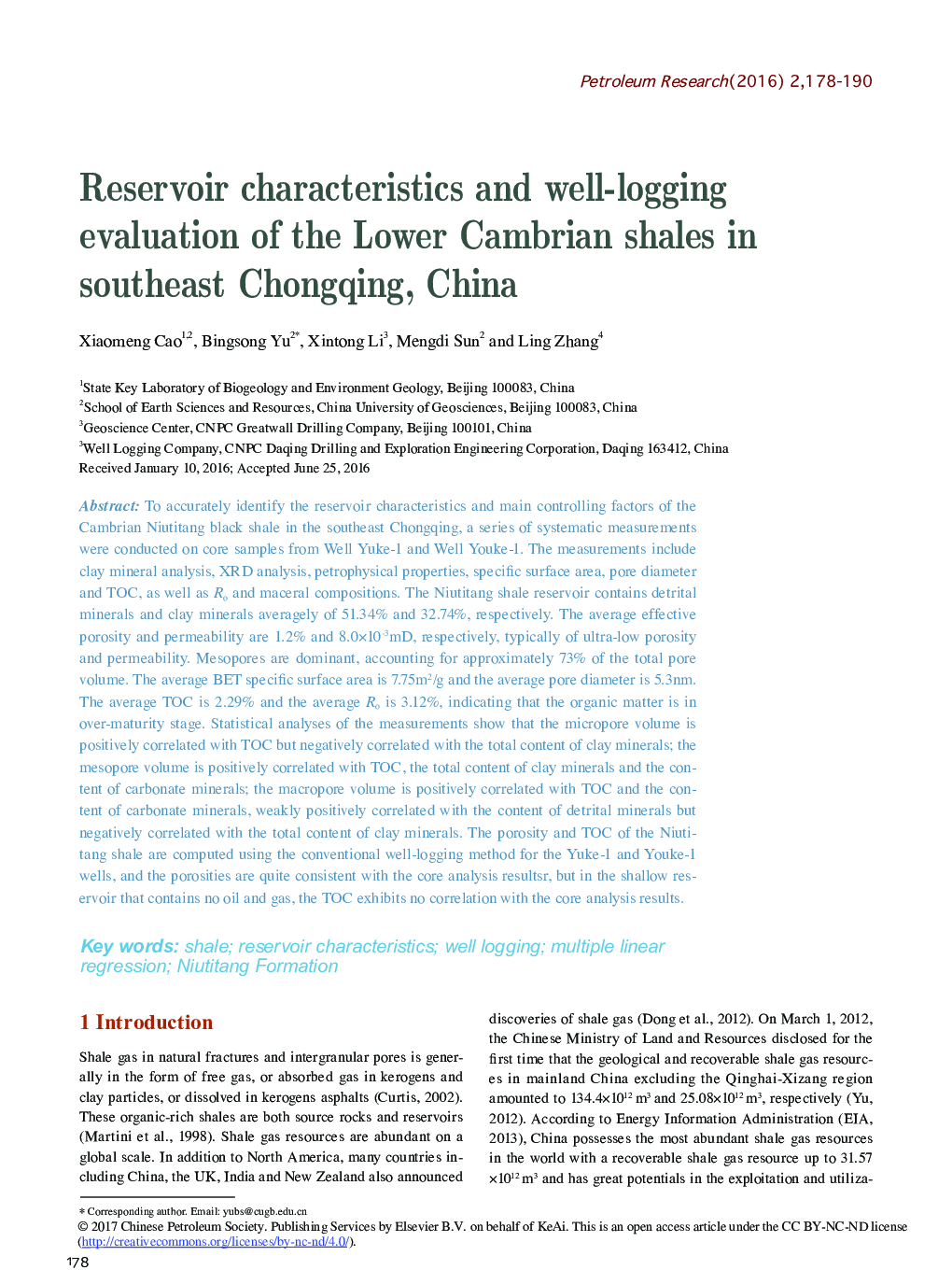| Article ID | Journal | Published Year | Pages | File Type |
|---|---|---|---|---|
| 10998236 | Petroleum Research | 2016 | 13 Pages |
Abstract
To accurately identify the reservoir characteristics and main controlling factors of the Cambrian Niutitang black shale in the southeast Chongqing, a series of systematic measurements were conducted on core samples from Well Yuke-1 and Well Youke-1. The measurements include clay mineral analysis, XRD analysis, petrophysical properties, specific surface area, pore diameter and TOC, as well as Ro and maceral compositions. The Niutitang shale reservoir contains detrital minerals and clay minerals averagely of 51.34% and 32.74%, respectively. The average effective porosity and permeability are 1.2% and 8.0Ã10-3mD, respectively, typically of ultra-low porosity and permeability. Mesopores are dominant, accounting for approximately 73% of the total pore volume. The average BET specific surface area is 7.75m2/g and the average pore diameter is 5.3nm. The average TOC is 2.29% and the average Ro is 3.12%, indicating that the organic matter is in over-maturity stage. Statistical analyses of the measurements show that the micropore volume is positively correlated with TOC but negatively correlated with the total content of clay minerals; the mesopore volume is positively correlated with TOC, the total content of clay minerals and the content of carbonate minerals; the macropore volume is positively correlated with TOC and the content of carbonate minerals, weakly positively correlated with the content of detrital minerals but negatively correlated with the total content of clay minerals. The porosity and TOC of the Niutitang shale are computed using the conventional well-logging method for the Yuke-1 and Youke-1 wells, and the porosities are quite consistent with the core analysis resultsr, but in the shallow reservoir that contains no oil and gas, the TOC exhibits no correlation with the core analysis results.
Related Topics
Physical Sciences and Engineering
Earth and Planetary Sciences
Geology
Authors
Xiaomeng Cao, Bingsong Yu, Xintong Li, Mengdi Sun, Ling Zhang,
